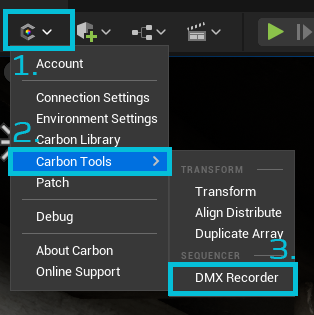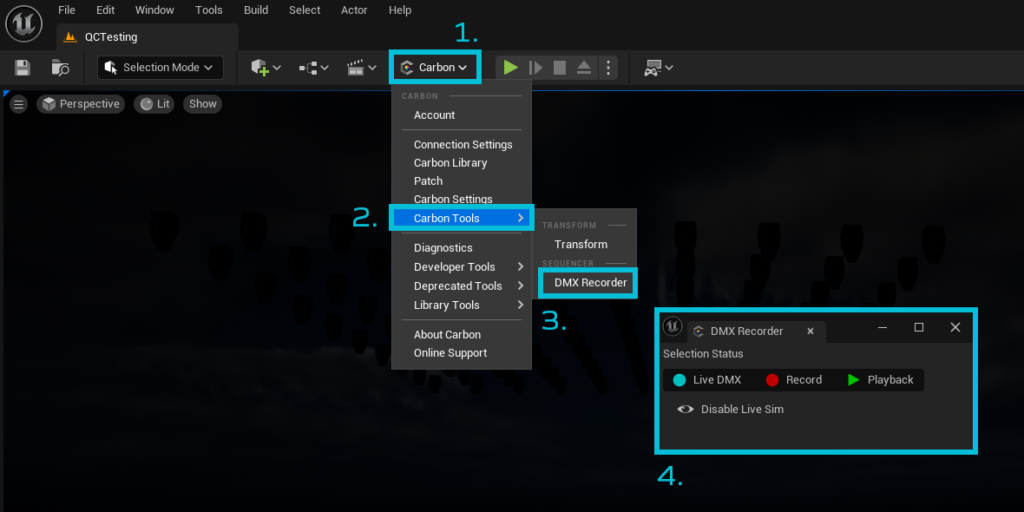The Sequencer section contains tools to help capture and playback DMX fixtures. Carbon for Unreal currently supports recording and playback of controlled fixtures using the built in Take Recorder and Sequencer.

DMX Recorder
Clicking DMX Recorder will open the GenericDMX Recorder Tool, which is designed to streamline the process of setting up, recording, and playing back fixtures data using the built in Sequencer timeline.
The GenericDMX Recorder Tool allows users to select the sequencer status of selected fixtures in the scene. The tool is compatible with all actors with a parent class of GenericDMX, including all Carbon library fixtures.
The GenericDMX Recorder Tool of two sections:
- Selection Status
- Disable Live Sim

Selection Status
Live DMX: Allows the selected fixtures to be controlled by live DMX connections, and ensures the fixtures are disarmed for recording. Selecting Live DMX will also remove the selected fixtures from the Take Recorder.
Record: Arms the selected fixtures for Take Recorder. Clicking Record will also open the Take Recorder and Sequencer panels if not already open in the editor.
Playback: Preps the selected fixtures to be played back using data from the Sequencer. Fixtures that are armed for playback will not be driven by DMX connections. Disarms the fixtures for recording.
Disable Live Sim
Disables simulation of all GenericDMX fixtures in the scene to improve performance during recording. It is most effective in scenes with a high performance cost.

